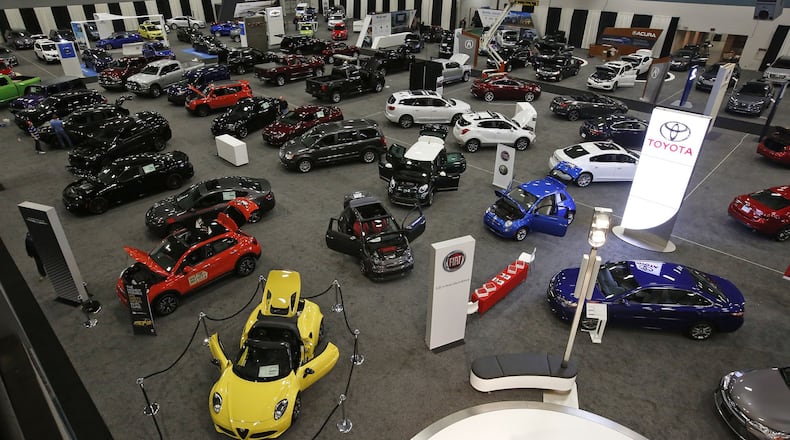An auto show lets you efficiently compare a vast number of cars from a variety of carmakers. And since you can’t actually buy a vehicle at an auto show, there’s no sales pressure.
If you know you want a new car but have no idea which is right for you, use the show to see what’s new and what grabs your attention. If you already have an idea of the car you want, use the show to get a closer look at it and to check the competition. Here are some other tips for car shopping at an auto show:
PLAN YOUR ROUTE: Most major auto shows have a smartphone app that provides a map of the show floor, exhibit hours, and a list of the vehicles on display. Download it and plan your visit in advance. Pay attention to the car brands you want to see and note the location of a few other carmakers that you hadn't considered. This tactic will help you plan the most efficient route along the huge show floors. Give yourself at least two hours. Plan on more time if you have the opportunity to test drive.
AVOID THE CROWDS: If possible, go on a weekday, preferably as soon as the doors open. If you can only go on a weekend, make sure to show up as early as possible.
TALK TO THE PRODUCT SPECIALISTS: The men and women who staff the carmakers' booths aren't window dressing or salespeople. Automakers hire and train them to be experts on the cars. They can be particularly useful for new vehicles that haven't yet hit the dealer showrooms. Don't hesitate to ask them any questions. If you're not sure which cars compete with the one you're interested in, ask the product specialists — they'll know.
You might also meet booth reps. These are local dealership salespeople who have been asked to staff the brand’s booth for the day. Since their day job is sales, they know the cars well. But since no cars are for sale at the show, there’s little chance of getting a hard sell. They may offer you their business cards, however.
READ UP AT THE KIOSKS: Don't feel like talking? Most booths also have computer kiosks with touchscreens or a brochure display. These provide more in-depth information on the vehicles displayed and allow you to configure a vehicle with options or show you what the car looks like in another color.
TAKE A TEST DRIVE: Auto shows often have ride-and-drive events. Not every auto show offers these drives or includes every vehicle on display. But if a test drive is available, check it out. There is no better research than taking a car for a spin yourself.
GET HANDS ON: Even if you can't drive a car at the show, you can put it through its stationary paces. Sit in the front and back seats. Which vehicle is the most comfortable? Which is a good fit for the size of your family?
Take a look at the buttons and dials on the instrument panel. Are they well-designed and intuitive? Pop the hatch or trunk and picture whether it could haul your average amount of cargo. These questions and their answers will help you determine if the vehicle you’re considering fits your needs. Take photos and notes of features you liked on each car.
Explore new technology. The product specialists can give you tutorials on a range of topics, from integrating your smartphone to inputting an address in the navigation system to understanding the latest active safety features.
DEBRIEF: Soon after the show, review your notes and photos. List your top car picks, the pros and cons for the vehicles, and questions for further research online or at a dealership.
With a little planning, you can turn an auto show into a one-stop fact-finding mission for your next vehicle purchase.
About the Author
